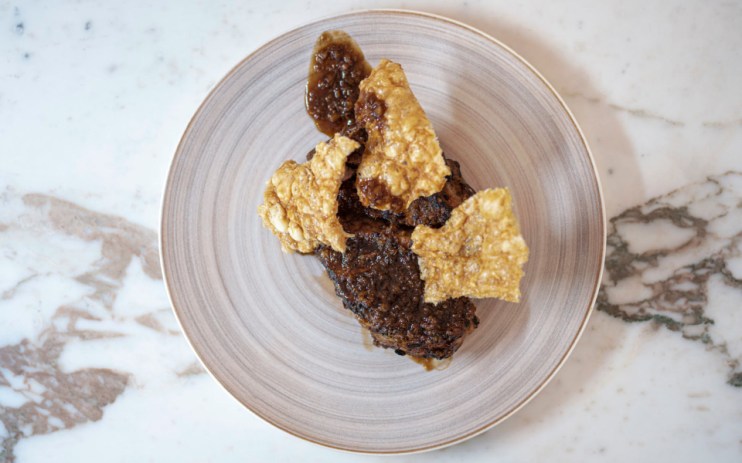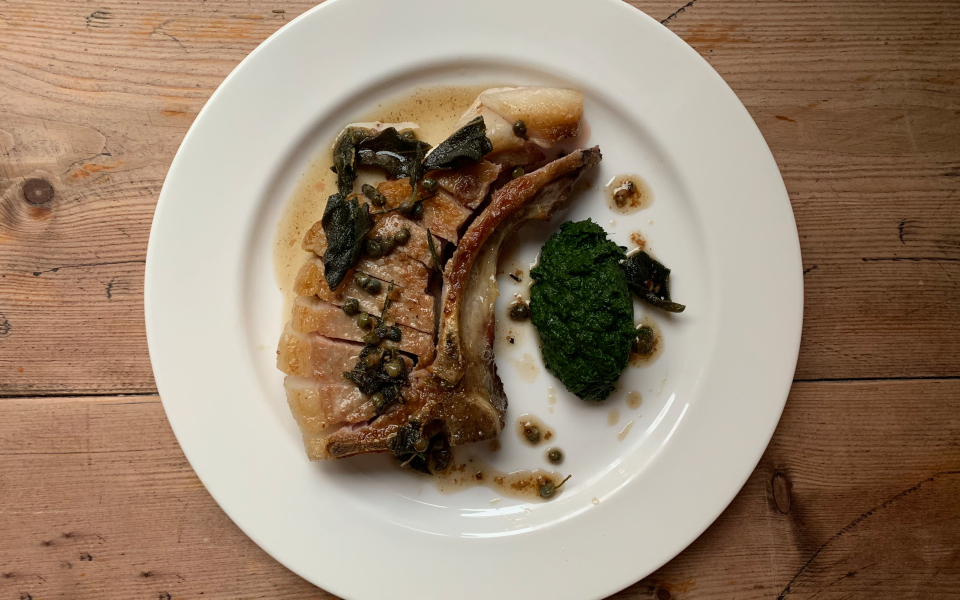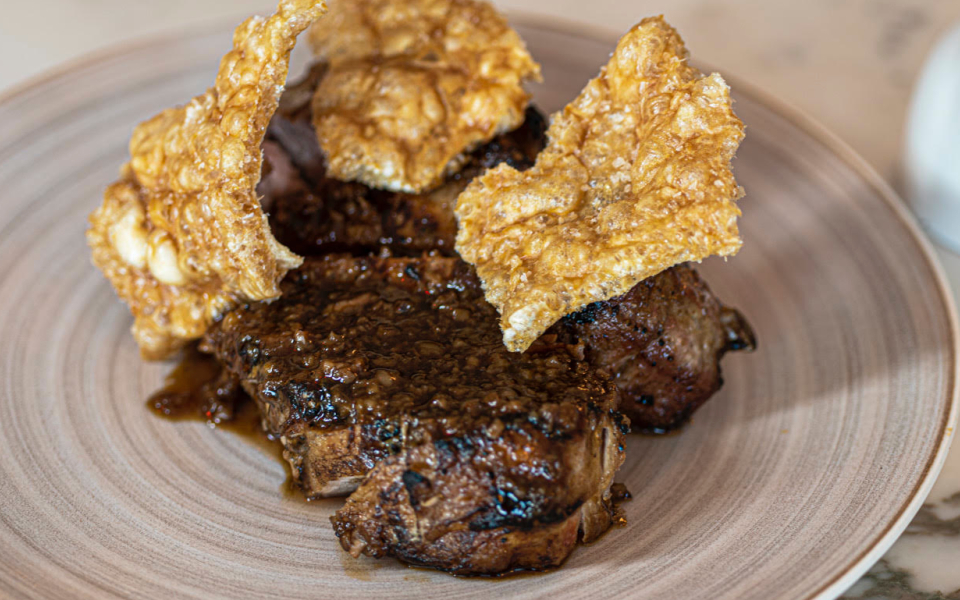Why pork chops are the new steak for the 2020s

Pork chops are having a moment. Thick and fat-rimmed, they come covered in capers and sage, or turnips and salsa verde. They may arrive with mash and cabbage, or hazelnuts and apple, or bathing in a splendid pig’s trotter gravy. For decades, beef has been the hero dish in top restaurants, with a legion of steak nerds clamouring to know every detail about the animals who donated their prime cut, from the density of marbling to whether the cow was allowed to enjoy a few pints of beer alongside its daily portion of grass.
Even as a self-confessed lover of beef, eating too much of it is problematic. It requires far more calories to produce than it yields, and has a greater impact on the environment than chicken, pork and dairy combined. Perhaps it’s no surprise that pork chops – hardly a new invention; we’ve been rearing domesticated pigs for at least 9,000 years – have found their place in this era of Greta Thunberg and vegan sausage rolls.

It helps that pork is also a more affordable option – Angela Hartnett’s pork chop at her new Cafe Murano in Bermondsey is just £19, while beef is nowhere on the menu.
There’s something generous about a well cooked pork chop. These great, charred hunks of meat, quintessentially British or Italian in design, are hearty and flavourful. A good pork chop requires both a deft touch on the stove and a canny knowledge of the supply chain. The rise of the chop is not a fad, but part of the modernisation of traditional fine dining.
At the French House, Soho, chef Neil Borthwick likes to plonk a hefty chop on greens, its fat cut like a bulbous cartoon hedgehog encircling the meat with calorific grace. He cuts the fat into squares, allowing it to be plucked from the meat. Damian Clisby, meanwhile, opened his Shoreditch restaurant Emile with a pork chop in pride of place on the menu.
“The pork we serve is a simple chop, cooked with brown butter and sage,” Clisby says. “There’s a great balance of fat to protein, the intention being that you eat the two together.”
When it comes to home cooking, pork chops have suffered a bad rep. Even a few minutes overdone and it’s dry as a chopping board, of use only for a brutal overnight stewing.
The main concern when placing pork on the menu, though, is provenance. “The majority of the pigs from mainstream farms is terrible” says Clisby. “They are reared too quickly and pumped full of growth hormones so the producers can yield quickly. We always work with small independent farmers. I buy Tamworth pigs from Nick and John Francis’ Paddock Farm.”
Salon, in Brixton, also uses a Tamworth chop, as does the fabled Noble Rot, and Cora Pearl in Covent Garden. At Trullo you’ll find Black Hampshire.
According to butcher and restaurateur Richard Turner, Britain is one of the best pork producers in the world, if you know where to look.

“Most of the modern breeds of pig were originally bred by a Briton, so it stands to reason we should have some of the best genetics, and therefore some of the best pork. It’s not always easy to find, however, because intensive farming practises are widespread, as are cross-breeds, which are grown too fast to make more money and are consequently less flavoursome.”
Diet, of course, is key. “Pigs eat grass, roots, insects and grubs, and it is thanks to this omnivorous, plentiful diet that they are so fatty. And fat is flavour.”
Those buying to cook at home should “look for pork from free range and pure-bred British breeds such as Old Spot, Tamworth or Middle White, although there are dozens to choose from.”
Turner says he’s also partial to a Hungarian breed called Mangalitza, which he grills on charcoal and dishes up with trotter gravy: “I like to serve a prime cut like a chop with a secondary cut such as pigs head or trotter, maybe even offal”.
Whether sourced from an English farm or a Hungarian one, the resurgence of the humble pork chop is something to celebrate.